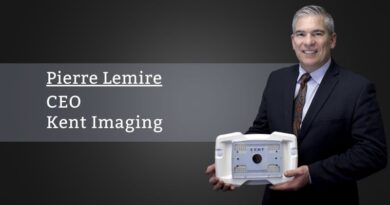Interventions to Reduce Pediatric Sedation in MRI
By Craig Carr, Director of Medical Imaging, Dayton Children’s Hospital
An MRI can be a scary experience for many, but it presents a whole new set of challenges for children. Sedation services are often necessary with pediatric imaging that requires the patient to hold still for long periods. Sedation assures the patient remains still enough to acquire high-quality diagnostic imaging.
Providing sedation for children may seem straightforward, but it does come with many challenges and concerns. From an operational perspective, it requires additional nursing and physician support, which in today’s healthcare climate only adds to staffing shortages in other critical areas within the organization. It also can have an impact on schedule availability. The more invasive a procedure, the more complex scheduling can be, creating scheduling backlogs.
From the patient and family experience perspective, it adds several hours to the exam due to pre-procedural workup and post-procedure care. Anytime medications are administered, there are those underlying risks to the patient that must be considered to assure the patient’s safety. With that said, we are always looking for new and innovative ways to reduce the need for sedation services whenever possible to promote a safe outcome for the patient.
These interventions lean heavily on both technology and human social interactions; these interventions are meant to distract the patient from all the foreign and somewhat scary things happening all around them within the MR environment. The environment houses lots of large and intimidating equipment, staff dressed in hospital attire, staff asking lots of questions, and to top it off, there’s the fear of the unknown.
So, the objective is to create a calming environment that would eliminate the need to place a child under sedation to complete their MRI whenever possible and to ease the patient’s anxiety. Not only do you have to account for the child’s anxiety, but you must also consider the family’s anxiety. They may not fully understand why their child is having the exam, or maybe they are struggling with the fear of their child’s diagnosis. These anxieties families face can sometimes be projected on the patient, thus exacerbating the patient’s fears and anxiety.
Reducing the need for sedation services starts with creating a calming environment; this is crucial to the patient and family experience. Establishing such an environment encompasses the use of technology and socially trained staff who cater to the specific needs of each patient. Some of the tools used to engage the patient and their family are technology, sensory lighting, patient care dogs, and staff.
Customizing each MR exam in collaborating with the radiologists based on the patient history and/or diagnosis enhances the success of completing the exam without needing sedation services.
Technology has flourished over the years, leading to exciting advancements in MR coils and software that have drastically decreased the time needed to complete an MR exam. Exams that used to take an hour may only take fifteen to twenty minutes, depending on the amount of imaging required by the radiologist to interpret the study confidently. When scanning children, time is a crucial element. Children’s attention spans differ from child to child but keeping scans to a minimum improves the outcome of success. Customizing each MR exam in collaborating with the radiologists based on the patient history and/or diagnosis enhances the success of completing the exam without needing sedation services.
Video goggles allow the child to select a favorite movie to watch during the exam. Goggles have been a necessary technological tool in the pursuit to distract and create an environment that allows the patient to temporarily escape the overwhelming and sometimes scary MR environment. The goggles obscure the patient’s peripheral vision, enabling them to focus on a familiar movie that eases their anxiety. The video goggles engage the patient in a fun manner that encourages them to be willing participants in the process.
Tablets can also be a tool used to distract and educate patients as they wait to be taken back to the MRI suite. Child-friendly educational videos are a great way to show the child what they can expect to see and hear while in the MR environment. Games are a great way to help distract from foreign interactions and prevent the child from becoming overwhelmed. Keeping the child engaged, relaxed and calm is critical.
Ambient lighting is another tool that can effectively create a calming environment. Whether it be state-of-the-art adjustable ambient lighting that is more interactive or rudimentary projected lighting that the child can help pick out, this light effect can play a significant role in creating a calming environment that promotes relaxation and distraction. This technique can prove very important for a child with sensory challenges.
With that said, you can have all the best technology in the world, but without the kind-hearted genuine social interaction from the staff, the efforts to distract and or calm a child into completing their test without sedation will prove futile. The medical team plays an intricate interactive role in playing with the child and explaining every step of the process to promote trust and guide them through their MRI journey.
Something new to our arsenal of distraction techniques is the use of facility dogs, which are extraordinarily effective with distracting and calming children. These specially trained dogs interact with the patient before testing to emotionally support and encourage the child to relax. Having the dogs adds to our “toolbox” of things we can use to give the child and family some sense of calm and motivation to complete testing without sedation.
In closing, it is essential to note that while not all children can complete an MR without sedation services, it is crucial to create a child-friendly environment to support the patient and their family during this very stressful and uncertain experience. Combining technology with sincere, kind human social interaction can remarkably reduce the need for sedation services in pediatric imaging.



